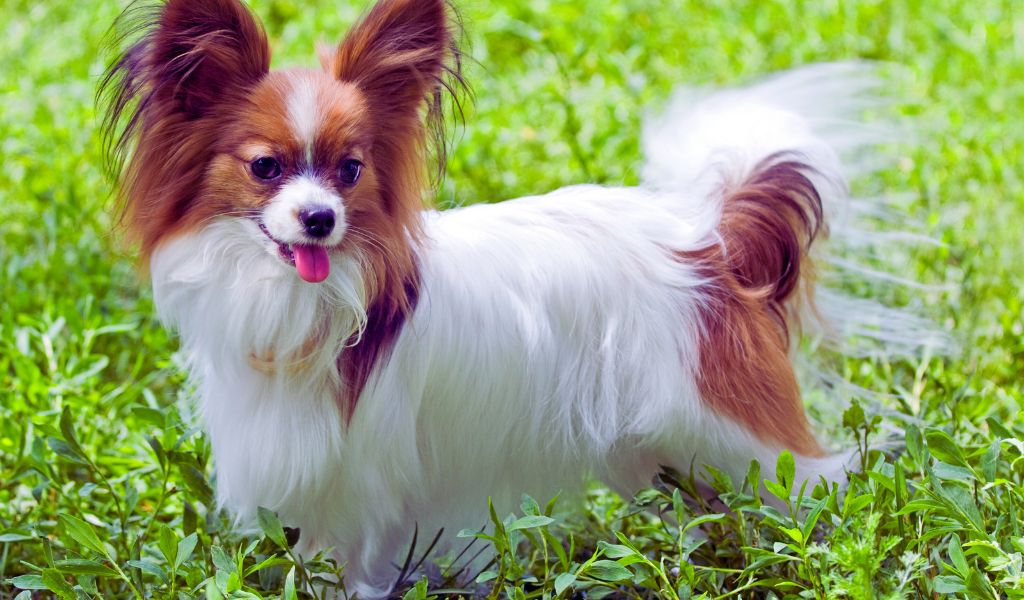Introduction to the Papillon breed
The Papillon, a breed characterised by its unique butterfly-like ears, is a quintessential member of the spaniel family, showcasing both elegance and vivacity.
With its roots deeply embedded in European history, this breed has gracefully transitioned from a treasured favourite of nobility to a beloved companion in households around the world.
Historical legacy of the Papillon
Origins and royal connections
The Papillon’s lineage can be traced back to the toy spaniels that were a fixture in Renaissance art.
Esteemed by European royalty, these dogs symbolised luxury and refinement, often accompanying figures like Louis XIV, Marie Antoinette, and Madame de Pompadour.
Their portrayal in historical paintings underscores their esteemed status and the luxurious lifestyle they were accustomed to.
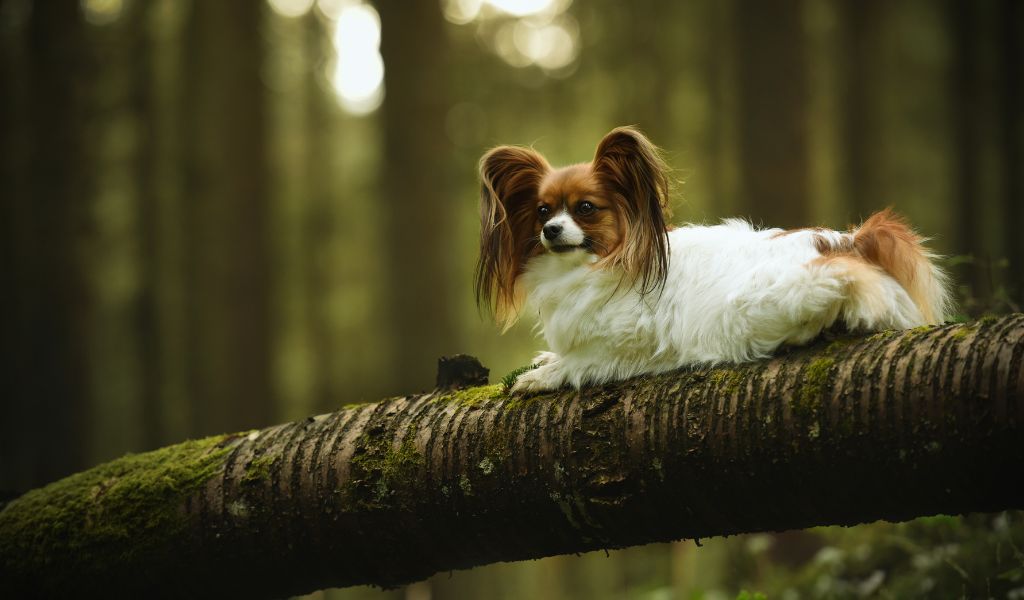
Evolution of the breed
Originally known as the Dwarf Spaniel, the breed underwent significant transformation, most notably the development of its distinctive erect ears, reminiscent of butterfly wings.
This unique feature led to the breed being renamed ‘Papillon’, which means butterfly in French.
This evolution resulted from centuries of selective breeding, culminating in the modern Papillon we cherish today.
Physical characteristics
Size and appearance
The Papillon, typically weighing between 3.6 to 4.5 kg, is distinguished by its refined yet robust build.
The most striking feature of this breed is its large, rounded ears, elegantly set high on the head and fringed with long, flowing hair, contributing to its distinctive and attractive appearance.
Coat and colouring
The Papillon’s coat is luxurious, long, and silky, unique for its absence of an undercoat, which minimises shedding.
The breed’s colour palette is varied, including white combined with shades of black, lemon, red, or sable, often accentuated by symmetrical facial markings, adding to their visual appeal.
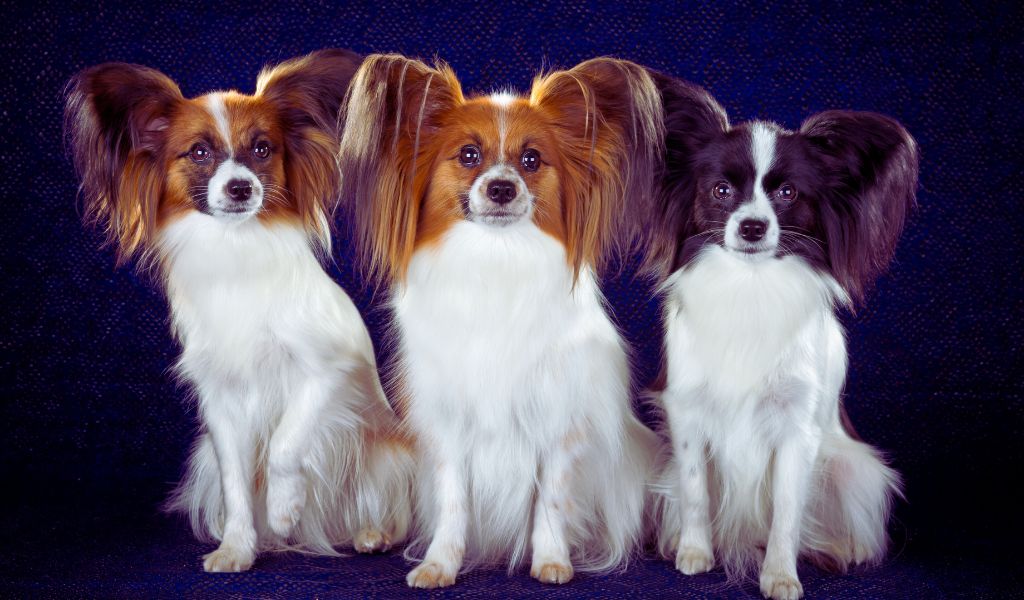
Temperament and personality traits
Intelligence and trainability
Papillons are renowned for their high intelligence, making them one of the most trainable breeds.
This intelligence, coupled with their eagerness to please, makes them outstanding participants in obedience and agility competitions, where they often excel.
Social disposition
Despite their small size, Papillons are known for their confidence and friendly nature.
They are highly sociable, thriving on human interaction and fitting effortlessly into various living arrangements, from compact city apartments to more spacious rural settings.
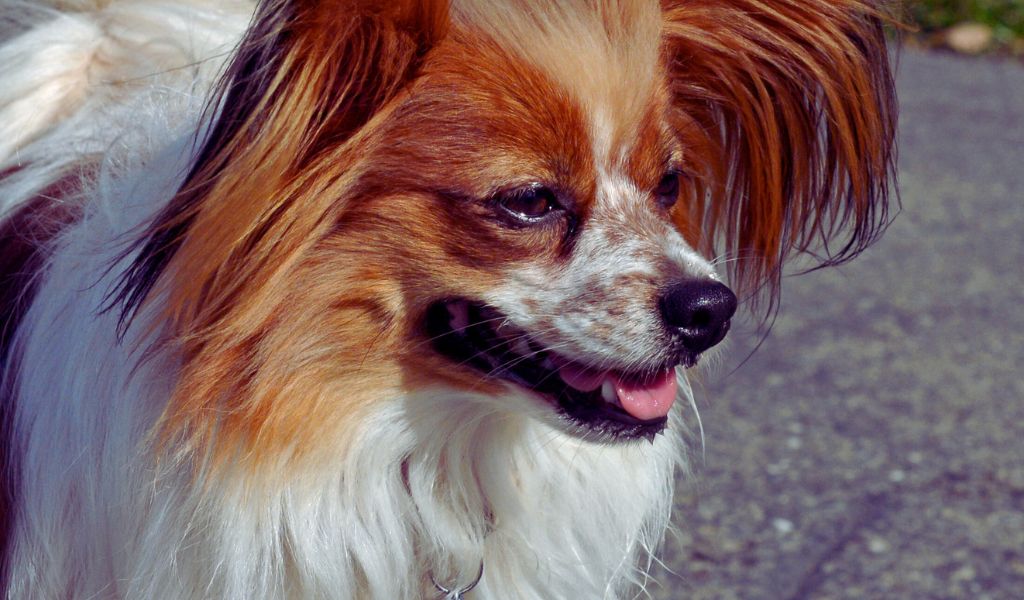
Health and care
Lifespan and general health
With adequate care, Papillons can enjoy a healthy lifespan of 12-15 years.
Generally robust, they are prone to certain breed-specific health issues such as patellar luxation, dental problems, and some cardiac conditions.
Ensuring regular veterinary check-ups and maintaining a balanced diet are vital for their long-term health and wellbeing.
Grooming needs
Papillons require consistent grooming to maintain their coat’s health and appearance.
Regular brushing, several times a week, and occasional professional grooming sessions are recommended to prevent matting and keep their coat in top condition.
Training and socialisation
Early training essentials
Papillons respond exceptionally well to positive reinforcement training methods.
Early socialisation and structured puppy training classes are essential for developing well-rounded social skills and promoting good behaviour.
Agility and mental stimulation
Given their natural agility and intelligence, Papillons are ideally suited for dog sports. Providing them with mental stimulation is crucial in preventing boredom, which can lead to behavioural issues.
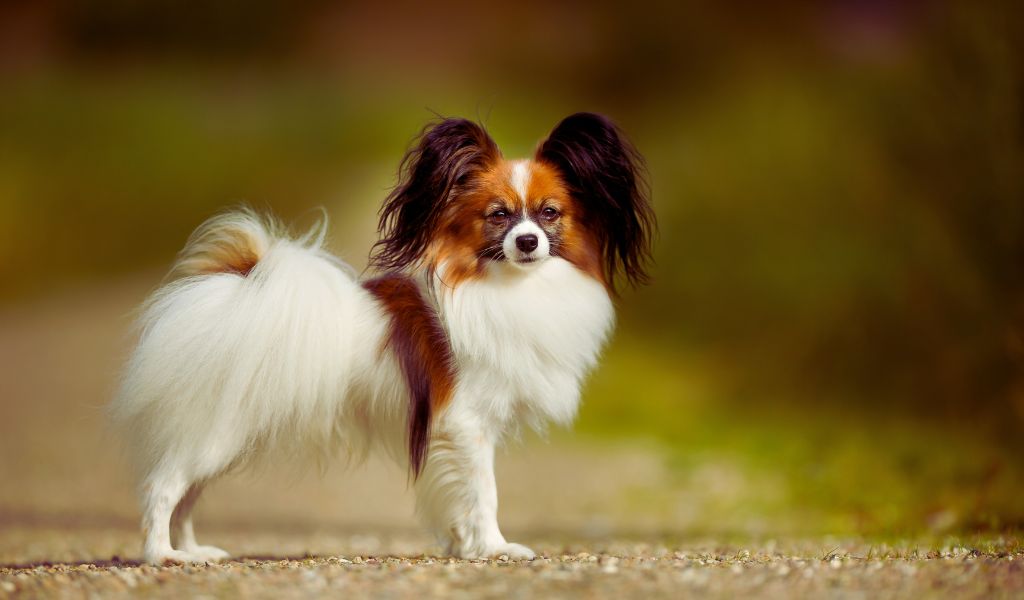
The Papillon’s spaniel origins and connections
The spaniel influence
The Papillon’s ancestry is closely linked to the spaniel breed, a group known for their hunting skills and amiable nature.
The transformation from a hunting companion to a lapdog in royal courts signifies a remarkable adaptation in both temperament and physicality.
This transition highlights the breed’s versatility and ability to thrive in various social settings.
Historical significance
The Papillon’s spaniel heritage is not just a footnote in history but a testament to the breed’s adaptability and enduring appeal.
From their origins as hunting dogs to their status as cherished companions of nobility, Papillons have retained their intelligence, affectionate nature, and social agility, which are hallmark traits of the spaniel family.
Papillon: The ideal companion
The Papillon, a breed that seamlessly blends elegance, intelligence, and affection, stands out as an ideal companion for those seeking a small, spirited dog.
Their adaptability to different lifestyles, coupled with their rich historical legacy, makes them not just pets, but living connections to a bygone era of luxury and refinement.
Owning a Papillon offers a unique opportunity to experience the joy of a breed that has captivated hearts for centuries.
FAQs: About Papillons
What is the typical lifespan of a Papillon?
A Papillon typically enjoys a lifespan of 12 to 15 years. With proper care, including a balanced diet and regular veterinary check-ups, many Papillons live a full and healthy life.
Are Papillons easy to train?
Yes, Papillons are known for their high intelligence and eagerness to learn, making them one of the most trainable dog breeds. They respond exceptionally well to positive reinforcement techniques and are often successful in obedience and agility training.
Do Papillons require a lot of grooming?
Papillons do require regular grooming due to their long, silky coat. They should be brushed several times a week to prevent matting and tangles. Despite their luxurious coat, they lack an undercoat, which reduces shedding. Occasional professional grooming is also recommended to keep their coat in top condition.
How well do Papillons adapt to different living environments?
Papillons are highly adaptable and can thrive in various living situations. They are just as comfortable in city apartments as they are in spacious country homes. However, they do need regular exercise and mental stimulation, regardless of their living environment.
Are Papillons good with children and other pets?
Papillons generally get along well with children and other pets, especially if they are socialised from a young age. They are friendly and sociable dogs but, due to their small size, interactions with very young children should be supervised to prevent accidental injury. Similarly, socialisation with other pets should be done gradually and under controlled conditions.

